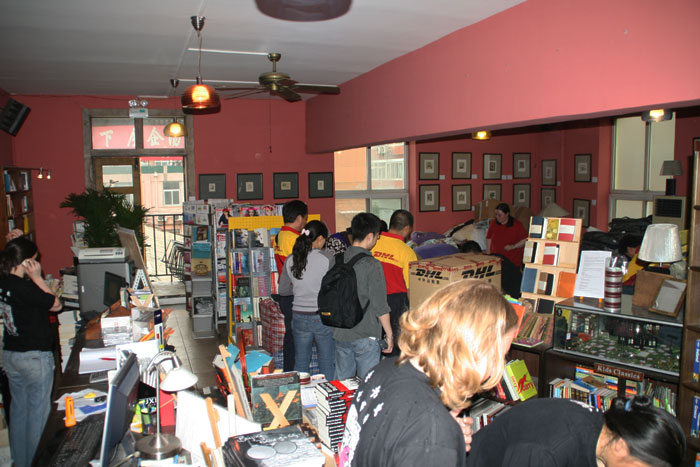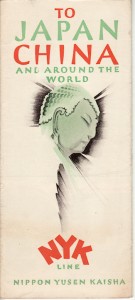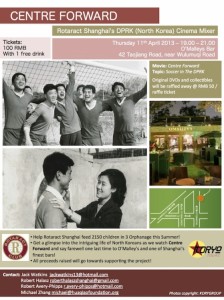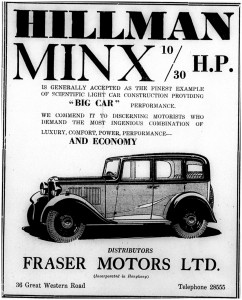Posted: April 14th, 2013 | No Comments »
Apologies for a few self-promotional posts for a week or so but new UK and US paperback editions of Midnight in Peking are appearing and I’ll be doing some events and talks in both the UK and US in April and May. First off, the new UK paperback edition priced at a lovely GBP5.99….I really love this cover (the designer specialises in covers for all those Victorian era crime novels that are really popular at the moment but the style also works well for cold, dark 1937 Peking I think) and so do the booksellers apparently, which is good news.

Posted: April 13th, 2013 | No Comments »
A little of topic today but I got asked to blurb this book some time back when it was in proof stages and it really is a new angle on an old story – i.e. Edward VIII and Andrew Rose’s The Woman Before Wallis. It’s called The Prince, the Princess and the Perfect Murder in the UK by the way. Absolutely no China angle (unless you fast forward to Wallis Simpson and remember that when Edward VIII was in this earlier mess Wallis was sojourning in shanghai and Peking in her “lotus years”).


From the glittering dance halls of Paris during World War I to the maisons de rendezvous, luxurious châteaus in the French countryside, The Woman Before Wallis recounts the untold story of Prince Edward’s tempestuous affair with a Parisian courtesan and the scandalous aftermath that has remained secret until now.
Prince Edward was the future King of England when he famously abdicated his crown over his love for the American divorcée Wallis Simpson. But two decades earlier, he was an inexperienced young man, stationed behind the lines during World War I, socializing with the elite aristocracy of Europe while fellow soldiers were being shelled in the trenches. Gradually, the awkward young man, who was desperate to see action, became involved in a very different sort of action—when his path crossed with the queen of the Paris demimonde.
Marguerite Alibert was a beautiful but tough Parisian who had fought her way up from street gamine to a woman haut de gamme, possibly the highest-ranking courtesan in Paris. She entertained some of the richest and most powerful men in the world—from princes to pashas. When the inexperienced Prince Edward was introduced to the alluring Marguerite, he was instantly smitten. After their tumultuous love affair ended, Edward thought he was free of Marguerite, but he was wrong. Several years later, Marguerite murdered her husband—a wealthy Egyptian playboy—by shooting him three times in the back at the Savoy Hotel in London. When Marguerite stood trial for murder, Edward was at risk of having his affair and behavior during the war exposed. What happened next was kept from the public for decades, uncovered thanks to exceptional access to unpublished documents held in the Royal Archives and private collections in England and France.
“We think we know the dramatic story of Edward VIII—Mrs. Simpson, abdication, exile—but The Woman Before Wallis shows us we don’t know the whole tale. Here is a younger Prince of Wales, embroiled in a crime passionnel the British Establishment had to bury. From the bloody trenches of the Great War, the infamous maisons des rendezvous of the swanky Right Bank events, the sumptuous suites of the Savoy events played out against a backdrop of demi-monde Paris and its beautiful (but expensive) courtesans, the louche salons of Cairo and London’s infamous Old Bailey. Before Wallis, it appears, there was even more scandal of the highest order!†—Paul French, author of the New York Times bestseller Midnight in Peking
Andrew Rose is a historian and barrister who practiced law in London for twenty years and was a judge until 2008. His first book, Stinie: Murder on the Common, was shortlisted for the Gold Dagger Nonfiction Award by the Crime Writers’ Association. He divides his time between London and France.
Posted: April 12th, 2013 | No Comments »
I’ve posted before about the Peter Pan Shop on Avenue Joffre (now Huai Hai Road) in Frenchtown that remained for many decades in so many young Shanghailanders minds as the most wonderful toy shop in Shanghai. It was run by two lovely White Russian Jewish ladies. But I’ve posted again as someone told me a nice anecdote about the shop the other day…
Chinese sales people from toy companies, publishers and curio dealers would turn up at the store looking to sell their wares into the store….they would invariably ask to speak to Mr Pan! JM Barrie’s mischievous little boy who never ages but can fly was rather unknown to them sadly!

Posted: April 12th, 2013 | No Comments »
An event I’m doing for the newly found (and congratulations and welcome) Beijing Royal Asiatic Society at the Beijing Bookworm on Saturday night, should you happen to be in the capital….
Saturday, April 13 7:30pm
The Badlands – a book launch with Paul French and RAS Beijing
40/50rmb

The Badlands, a warren of narrow hutongs in the eastern district of pre-communist Peking, had its heyday in the 1930s. Home to the city’s drifters, misfits and the odd bohemian, it was a place of opium dens, divebars, brothels, flophouses and cabarets, and was infamous for its ability to satisfy every human desire from the exotically entertaining to the criminally depraved. Paul French’s latest The Badlands – is a series of vignettes of eight non-Chinese residents of the precinct – White Russians, Americans and Europeans. Join us as French brings the Badlands vividly back to life, providing a short but potent account of a place and a way of life until now largely forgotten, but here rendered unforgettable.

Posted: April 11th, 2013 | No Comments »
Michael Wolf, of the excellent Hong Kong Corner Houses book, has just published a book of earth god shrines in Hong Kong…

Following the success of Hong Kong Corner Houses (2011), German photographer Michael Wolf continues with his collaboration with Hong Kong University Press to produce Small God, Big City. Michael again uses his creative eye to draw attention to overlooked objects in the visually rich urban environment of Hong Kong. This time, the object is the Earth God shrine, found commonly by the doorways of shops and homes throughout Hong Kong.
Through his visually stimulating and thought- provoking photographs, Michael challenges our sensitivity to seemingly familiar everyday things. An interpretative text for the photographs is authored by two familiar names: Lee Ho Yin and Lynne DiStefano, who are well-known academics and practitioners of heritage conservation in Hong Kong. The text leads readers to a better understanding of the topic and the meaning behind Michael’s photographs of Earth God shrines in urban Hong Kong. The topic of this book is timely, given the vulnerability of traditional beliefs and practices in an increasingly urbanised Hong Kong. It is hoped that Small God, Big City will provoke deeper thoughts on who we are and what we believe in, in this modern world.
Posted: April 10th, 2013 | No Comments »
A travel brochure issued in 1926 by Japan’s NYK shipping line to Japan, China and elsewhere in Asia. The original features a large colour map of the world showing the routes of, and rail connections, of the NYK lines. Above and below the map there are 16 photographic images illustrate the luxurious accommodation aboard the NYK liners – I’ll try and scan that in somehow. I’m sure you’ll agree – gorgeous cover…

Posted: April 10th, 2013 | No Comments »
Anyone who fancies sitting through a couple of hours of DPRK film can head over to O’Malley’s Bar in Shanghai this Thursday (11th) to see Centre Forward….courtesy of our good friends at Koryo Tours…

Posted: April 9th, 2013 | No Comments »
I have a certain fondness for the Hillman Minx as it was my dad’s first car (admittedly a lot later than the one below – a 1960s Series V). The first Hillman Minx was produced in England in 1932 and here’s an advert for the car in 1934 Shanghai so one of the initial models. I always wonder why anyone bought a British car in Shanghai when American and French ones were available. I mean, come on – I bow to no one in my patriotism for the British car industry but honestly….a Cadillac or a Voisin would be better. Still a Hillman Minx was not too shabby and Fraser Motor’s out on the Great Western Road (Yannan Road West) had a bunch for you see and try – and don’t forget (as many people identifying pictures and making films of old Shanghai invariably do) the city’s International Settlement correctly drove on the left until 1945 (when the GI’s couldn’t handle it and switched it over – Shanghai’s roads have been chaos ever since!!) s0 British cars, being left had drive, had a certain advantage.










